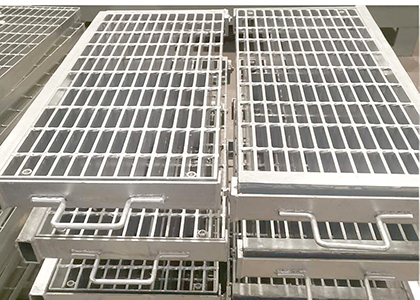Pressed-welded steel grating offers several distinct advantages. Firstly, it exhibits excellent strength and durability. The welding process securely bonds the steel components, enabling it to withstand heavy loads and harsh environmental conditions. It is highly resistant to impacts, abrasions, and corrosion, making it suitable for industrial floors, walkways, and platforms where long-term reliability is crucial.
In terms of design flexibility, pressed-welded steel grating stands out. It can be fabricated in various shapes, sizes, and patterns. Different bar spacings and thicknesses can be easily adjusted to meet specific project requirements. This adaptability allows architects and engineers to create unique and functional structures. For example, it can be customized for ramps with the right slope and grip, enhancing both safety and aesthetics.

The manufacturing process of pressed-welded steel grating is relatively efficient. Advanced production techniques ensure a high production rate while maintaining quality. This leads to cost-effectiveness in large-scale production. The consistency in production also means that each piece of grating has uniform dimensions and properties, reducing the need for extensive quality control and rework.
Installation of pressed-welded steel grating is convenient. Its modular design allows for quick and easy assembly on-site. Simple tools and minimal labor are required, saving time and installation costs. Moreover, it can be easily cut and modified if necessary during installation, accommodating any unforeseen site conditions or changes in the design layout.
From a maintenance perspective, pressed-welded steel grating is favorable. It is easy to clean and inspect. Debris and dirt can be easily removed, and any signs of damage or wear can be quickly identified. Regular maintenance such as painting or galvanizing can further extend its service life, ensuring that it remains in good condition for an extended period, reducing the long-term cost of ownership.

